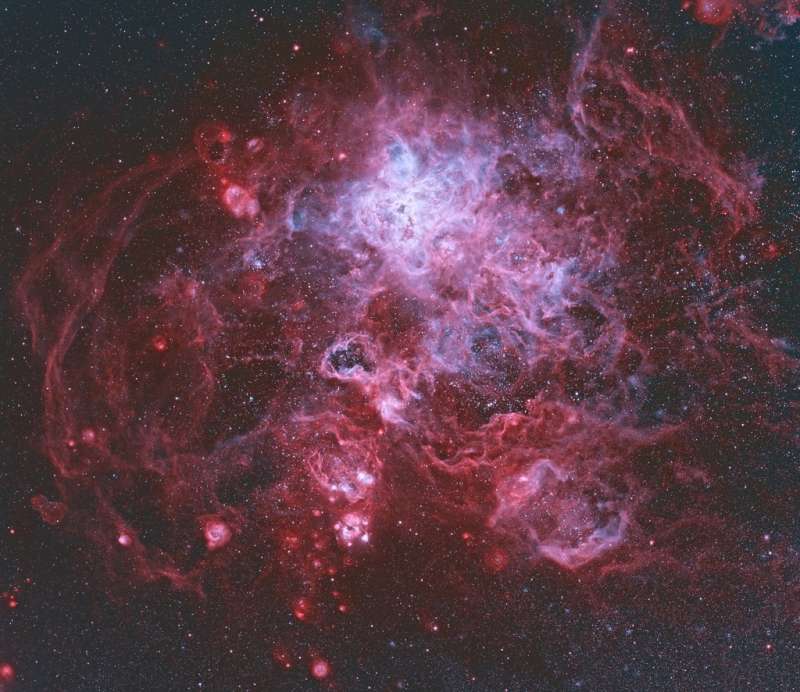Credit & Copyright: Ignacio
Diaz Bobillo
Explanation:
The
Tarantula Nebula is more than a thousand light-years in diameter,
a giant star forming region within nearby satellite galaxy the
Large Magellanic Cloud,
about 180 thousand light-years away.
The largest, most violent star forming region known in the whole Local
Group of galaxies, the cosmic arachnid sprawls across
this spectacular view
composed with narrowband data centered on emission
from ionized hydrogen and oxygen atoms.
Within the Tarantula (NGC 2070), intense radiation,
stellar winds and supernova shocks from the central young cluster of
massive stars, cataloged as R136,
energize the nebular glow and shape the spidery filaments.
Around
the Tarantula are other star forming regions with
young star clusters, filaments, and blown-out
bubble-shaped clouds.
In fact, the frame includes the site of the closest supernova in modern times,
SN 1987A,
right of center.
The rich field of view spans about 1 degree
or 2 full moons, in the southern
constellation
Dorado.
But were the Tarantula Nebula closer, say 1,500 light-years distant like
the local star forming Orion Nebula,
it would take up half the sky.
Watch:
Leonid Meteor Shower
1999 2000 2001 2002 2003 2004 2005 2006 2007 2008 2009 2010 2011 2012 2013 2014 2015 2016 2017 2018 2019 2020 2021 2022 2023 2024 2025 |
Yanvar' Fevral' Mart Aprel' Mai Iyun' Iyul' Avgust Sentyabr' Oktyabr' Noyabr' Dekabr' |
NASA Web Site Statements, Warnings, and Disclaimers
NASA Official: Jay Norris. Specific rights apply.
A service of: LHEA at NASA / GSFC
& Michigan Tech. U.
|
Publikacii s klyuchevymi slovami:
LMC - Tumannost' Tarantul - zvezdoobrazovanie - BMO - Bol'shoe Magellanovo Oblako
Publikacii so slovami: LMC - Tumannost' Tarantul - zvezdoobrazovanie - BMO - Bol'shoe Magellanovo Oblako | |
Sm. takzhe:
Vse publikacii na tu zhe temu >> | |
